Valentine’s Day is around the corner and what better way to celebrate than with this amazing vegan red velvet cake! Red velvet cake appeared in the cookbook The Joy of Cooking in 1943 and this was the cake’s first national mention. It does date back to Victorian times however when a bit of cocoa was added to cakes for a more velvety texture. According to the Waldorf Astoria Hotel, they are the birthplace of the Red Velvet cake and take credit for its existence but others have challenged that claim. I don’t know for sure but what I do know is that it’s a delicious cake slathered with cream cheese frosting and mine is all vegan of course!
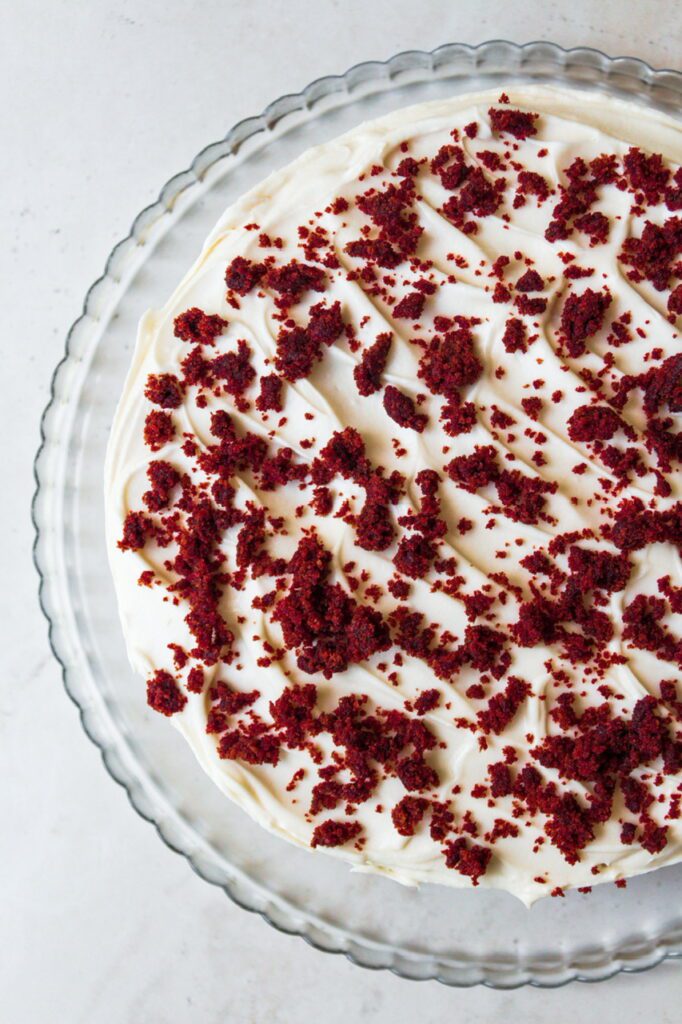
I’ve been making quite a few cake recipes lately using what’s been called the “reverse creaming method” and this cake is no exception. This method adds fat to the dry ingredients first so it coats them preventing them from forming gluten when the wet ingredients are added resulting in a more tender cake that can’t be over-mixed. It’s great for novice bakers as it takes the guess work out of mixing and how long to mix as that can result in a tough cake. You need to mix enough to build structure but not too much to form gluten. It’s hard in traditional mixing methods (cream fat and sugar, add wet then dry ingredients) to get it right but this method provides consistent results every time!
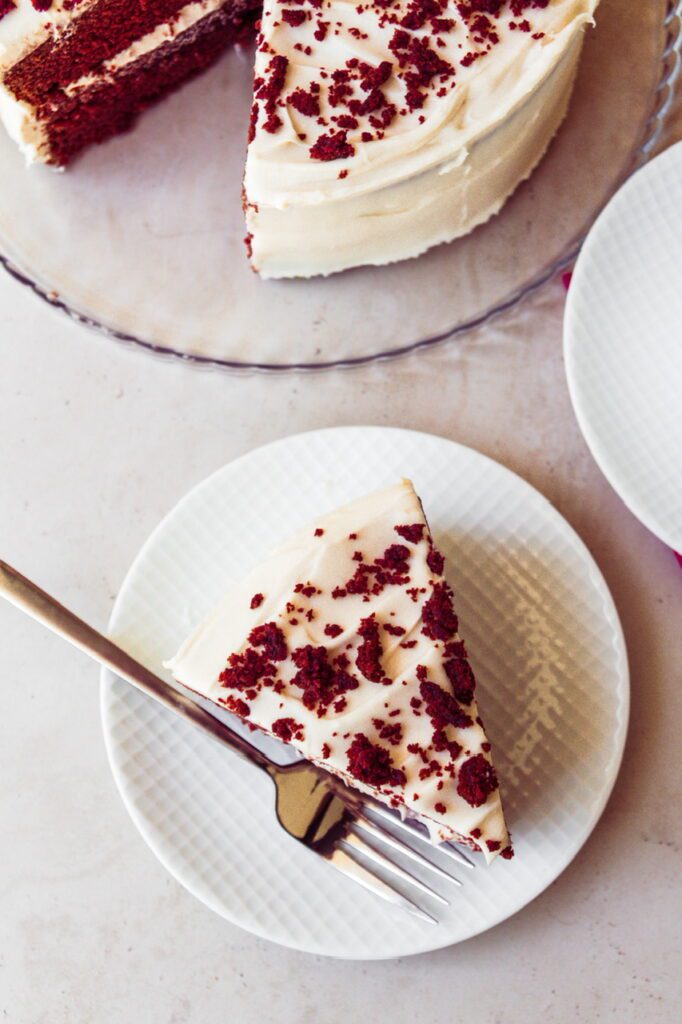
The traditional tang of this cake comes from buttermilk but we’re making it vegan of course and using vegan milk and white vinegar. I often use lemon juice to make buttermilk but white vinegar is traditionally used so we’re sticking with that but you could use lemon juice or apple cider vinegar if that’s all you have. Cocoa powder is also another interesting ingredient. We don’t use much in the cake but traditionally “natural” cocoa powder is used (like Hershey’s brand) and the reaction with the baking soda and buttermilk gave the cake its reddish hue but that’s been amped up by adding food coloring in most recipes as it’s not red enough. I prefer the taste of Dutch processed cocoa so that’s what I use but it doesn’t get as red but has deeper flavor in my opinion. Bottom line is you could use either kind as we’re not using a lot.
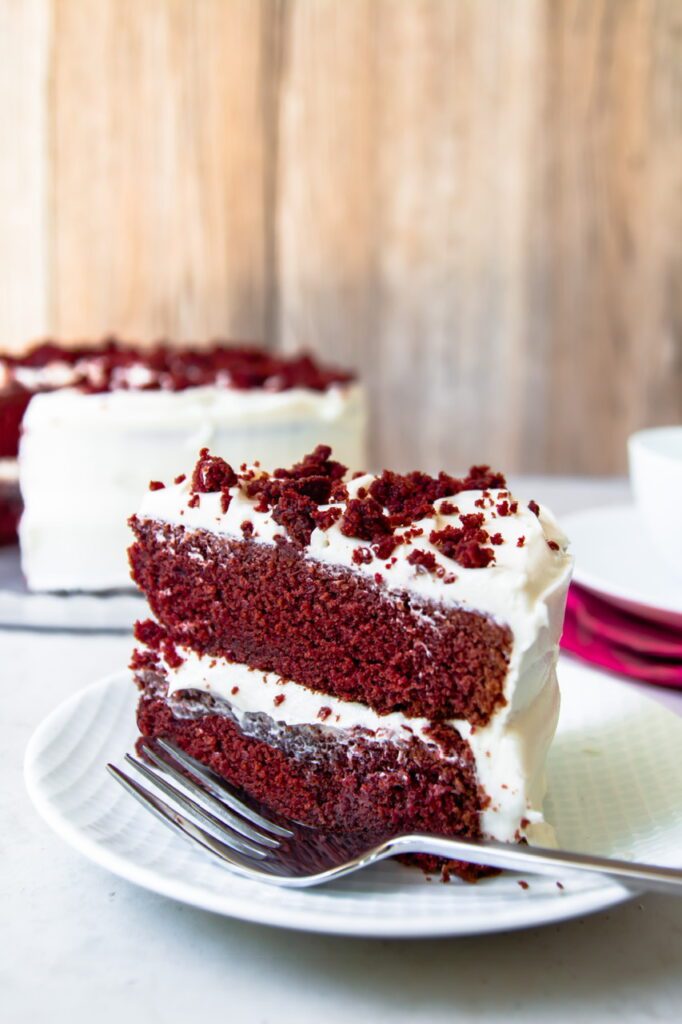
Regarding red food coloring, you can use a natural brand or an artificial color but some vegans object to animal testing that often goes hand in hand with artificial ingredients so you make that ethical choice for yourself. I used natural coloring and added a fair amount (two teaspoons) to the batter for the red color but it’s not as vibrant as it would be with an artificial color. Some red food colors are made with crushed insects (carmine) so avoid those but they’re not readily available for consumers so much these days.
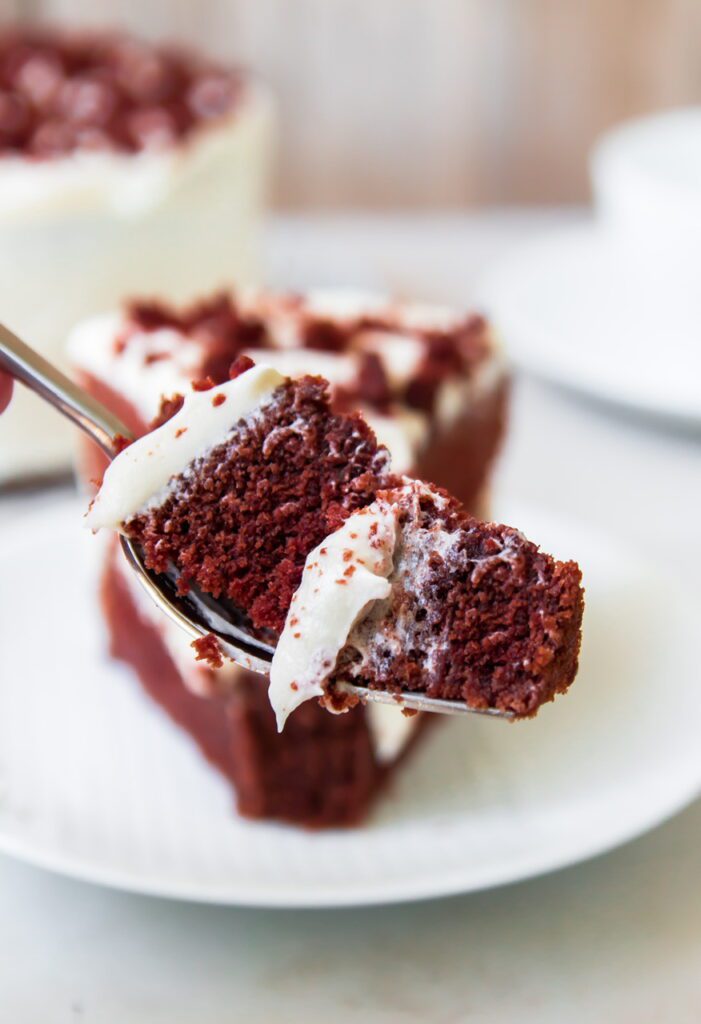
Like with any cake, it’s best not to over bake this cake. Everyone’s ovens are different and depending on whether or not you use an 8 inch or 9 inch cake pan also affects baking times. These can also be baked as cupcakes if you prefer. I use a convection oven which bakes things faster so start checking about 20 minutes into baking with a cake tester and if it comes out clean, remove it from the oven and let cool before frosting. Most cakes will have a slight dome to them so I usually even it out before frosting by using a large bread knife to cut across the top and in this case, I used that bit of cake to crumble over the top for a nice presentation. It’s optional but looks like a diner style cake. I hope you enjoy this delicious treat that’s great any time of year. Don’t forget to rate and review if you do make it!
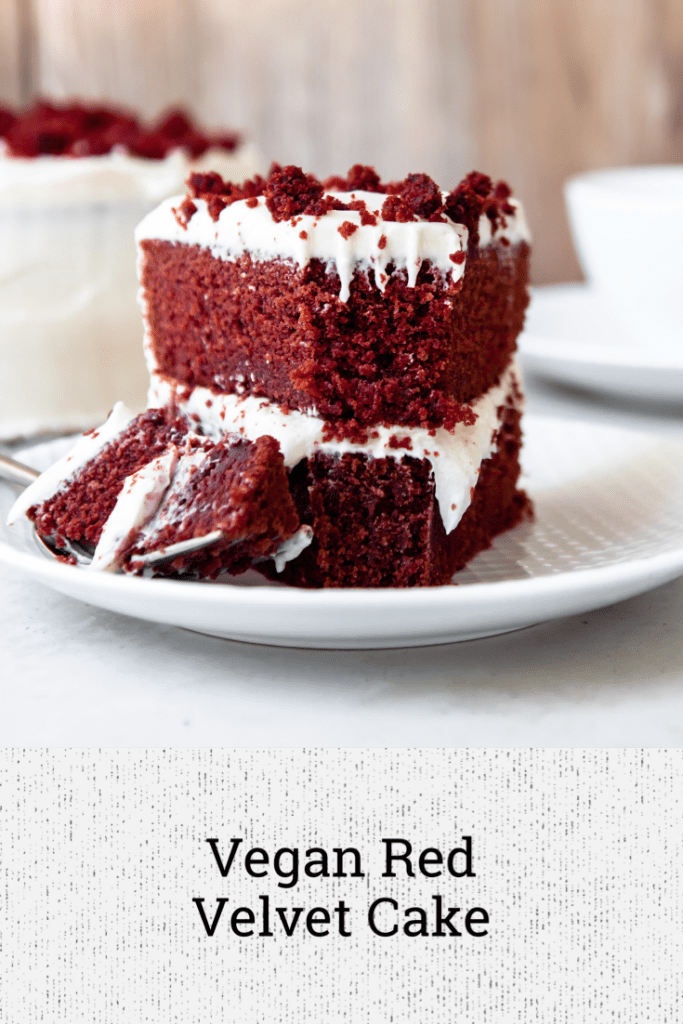

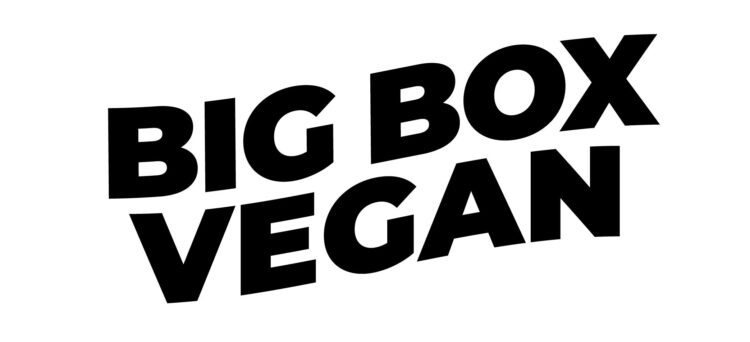
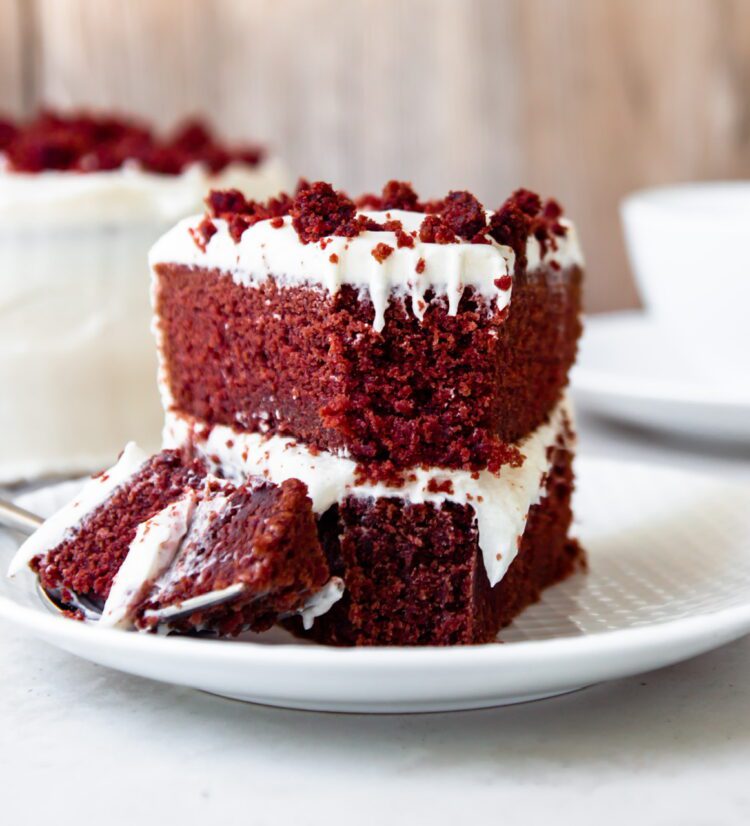
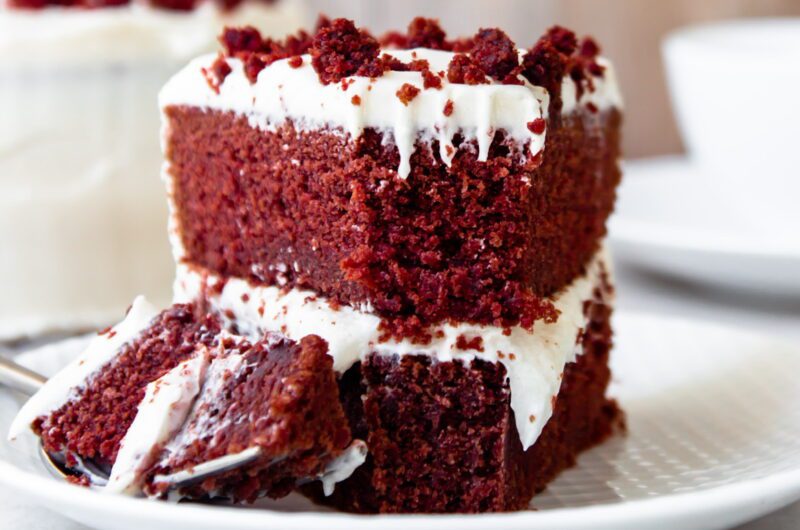
Pingback: Easy Vegan Gingerbread Loaf Cake – Big Box Vegan